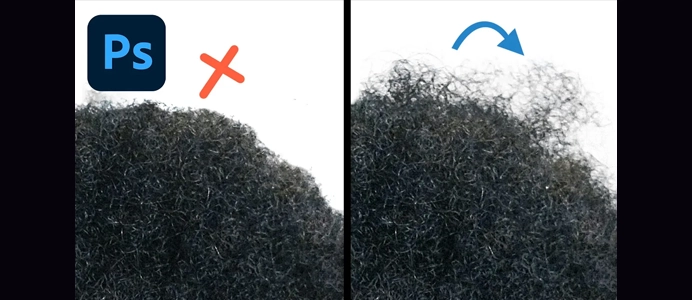HOW to SMOOTH SKIN using FREQUENCY SEPARATION in Photoshop
HOW to SMOOTH SKIN using FREQUENCY SEPARATION in Photoshop. Smoothing skin using frequency separation in Photoshop is a common technique used in portrait retouching. Frequency separation separates the image into two layers: a high-frequency layer containing texture details and a low-frequency layer containing color and tone. This allows you to work on each aspect separately. Here’s a step-by-step guide:
1: Duplicate the Background
- Open Your Image:
- Launch Photoshop and open the image you want to retouch.
- Duplicate the Background:
- Right-click on the Background layer in the Layers panel and choose “Duplicate Layer.” Click OK.
2: Apply Gaussian Blur
- Select the Top Layer:
- Click on the duplicated layer to select it.
- Apply Gaussian Blur:
- Go to
Filter > Blur > Gaussian Blur. - Adjust the Radius until you get a blur that smoothens the skin but retains the overall features. Typically, a radius between 5-10 pixels works well.
- Go to
3: Create High and Low-Frequency Layers
- Create High-Frequency Layer:
- Duplicate the blurred layer by right-clicking on it and choosing “Duplicate Layer.” Name it “High Frequency.”
- Apply Image Adjustment:
- With the “High Frequency” layer selected, go to
Image > Apply Image.- Set the Layer to “Background Copy.”
- Choose the Blending to “Subtract.”
- Set the Scale to 2 and the Offset to 128.
- With the “High Frequency” layer selected, go to
- Create Low-Frequency Layer:
- Create a new layer and name it “Low Frequency.”
- Group Layers:
- Select both the “High Frequency” and “Low Frequency” layers, right-click, and choose “Group from Layers.”
4: Use the Healing Brush Tool
- Select the Low-Frequency Group:
- Click on the “Low Frequency” group in the Layers panel.
- Use the Healing Brush Tool:
- Select the Healing Brush tool (J).
- Sample an area close to a blemish or imperfection by holding down Alt (Option on Mac) and clicking.
- Paint over the imperfections on the low-frequency layer. The texture from the high-frequency layer will be preserved.
5: Adjusting Tones and Colors
- Select the High-Frequency Group:
- Click on the “High Frequency” group in the Layers panel.
- Use the Brush Tool:
- Select the Brush tool (B) with a soft brush and set the blending mode to “Normal.”
- Adjust Opacity:
- Adjust the opacity as needed and paint over areas where you want to blend tones or colors.
6: Fine-Tune
- Fine-Tune as Needed:
- Continue fine-tuning by adjusting the opacity of the layers, using different retouching tools, and addressing specific areas.
- Check Before and After:
- Toggle the visibility of the “High Frequency” and “Low Frequency” groups to compare the before and after. Make additional adjustments as needed.
Tips:
- Use a Light Touch:
- Be subtle with your adjustments to avoid an unnatural look.
- Address Specific Areas:
- Focus on areas with blemishes, uneven skin tones, or imperfections.
- Experiment with Blending Modes:
- Experiment with blending modes and opacity settings for the brushes to achieve the best results.
- Take Breaks:
- Take breaks and zoom out periodically to avoid over-retouching.
Frequency separation is a powerful technique, but it requires practice and a careful eye for detail. The goal is to achieve a natural and pleasing result without sacrificing the subject’s unique features.












